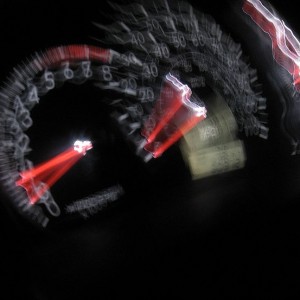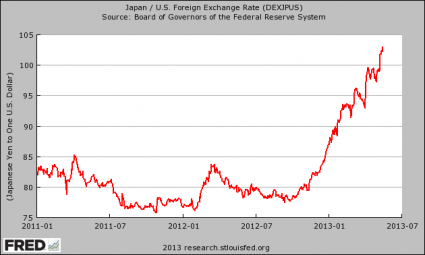 The financial system of the third largest economy on the planet is starting to come apart at the seams, and the ripple effects are going to be felt all over the globe. Nobody knew exactly when the Japanese financial system was going to begin to implode, but pretty much everyone knew that a day of reckoning for Japan was coming eventually. After all, the Japanese economy has been in a slump for over a decade, Japan has a debt to GDP ratio of well over 200 percent and they are spending about 50 percent of all tax revenue on debt service. In a desperate attempt to revitalize the economy and reduce the debt burden, the Bank of Japan decided a few months ago to start pumping massive amounts of money into the economy. At first, it seemed to be working. Economic activity perked up and the Japanese stock market went on a tremendous run. Unfortunately, there is also a very significant downside to pumping your economy full of money. Investors start demanding higher returns on their money and interest rates go up. But the Japanese government cannot afford higher interest rates. Without super low interest rates, Japanese government finances would totally collapse. In addition, higher interest rates in the private sector would make it much more difficult for the Japanese economy to expand. In essence, pretty much the last thing that Japan needs right now is significantly higher interest rates, but that is exactly what the policies of the Bank of Japan are going to produce.
The financial system of the third largest economy on the planet is starting to come apart at the seams, and the ripple effects are going to be felt all over the globe. Nobody knew exactly when the Japanese financial system was going to begin to implode, but pretty much everyone knew that a day of reckoning for Japan was coming eventually. After all, the Japanese economy has been in a slump for over a decade, Japan has a debt to GDP ratio of well over 200 percent and they are spending about 50 percent of all tax revenue on debt service. In a desperate attempt to revitalize the economy and reduce the debt burden, the Bank of Japan decided a few months ago to start pumping massive amounts of money into the economy. At first, it seemed to be working. Economic activity perked up and the Japanese stock market went on a tremendous run. Unfortunately, there is also a very significant downside to pumping your economy full of money. Investors start demanding higher returns on their money and interest rates go up. But the Japanese government cannot afford higher interest rates. Without super low interest rates, Japanese government finances would totally collapse. In addition, higher interest rates in the private sector would make it much more difficult for the Japanese economy to expand. In essence, pretty much the last thing that Japan needs right now is significantly higher interest rates, but that is exactly what the policies of the Bank of Japan are going to produce.
There is a lot of fear in Japan right now. On Thursday, the Nikkei plunged 7.3 percent. That was the largest single day decline in more than two years. Then on Monday the index fell by another 3.2 percent.
And according to Business Insider, things are not looking good for Tuesday at this point…
In post-close futures trading, the Nikkei has dropped by another couple hundred points, and has dropped below 14,000.
Are we witnessing the beginning of a colossal financial meltdown by the third largest economy on the planet? The Bank of Japan is starting to lose control, and if Japan goes down hard the crisis could spread to Europe and North America very rapidly. The following is from a recent article by Graham Summers…
As Japan has indicated, when bonds start to plunge, it’s not good for stocks. Today the Japanese Bond market fell and the Nikkei plunged 7%. The entire market down 7%… despite the Bank of Japan funneling $19 billion into it to hold things together.
This is what it looks like when a Central Bank begins to lose control. And what’s happening in Japan today will be coming to the US in the not so distant future.
If you think the Fed is not terrified of this, think again. The Fed has pumped over $1 trillion into foreign banks, hoping to stop the mess from getting to the US. As Japan is showing us, the Fed will fail.
Investors, take note… the financial system is sending us major warnings…
If you are not already preparing for a potential market collapse, now is the time to be doing so.
And all of this money printing is absolutely crushing the Japanese yen. Since the start of 2013, the yen has declined 16 percent against the U.S. dollar, even though the U.S. dollar is also being rapidly debased. Just check out this chart of the yen vs. the U.S. dollar. It is absolutely stunning…
The term “currency war” is something that you are going to hear a lot more over the next few years, and what you can see in the chart above is only the beginning.
What the Bank of Japan is doing right now is absolutely unprecedented. It has announced that it plans to inject the equivalent of approximately $1.4 trillion into the Japanese economy in less than two years.
As Kyle Bass recently discussed, that dwarfs the quantitative easing that the Federal Reserve has been doing…
“What they’re doing represents 70% of what the Fed is doing here with an economy 1/3 the size of ours”
The big problem for Japan will come when government bond yields really start to rise. The yield on 10 year government bonds has been creeping up over the past few months, and if they hit the 1.0% mark that will set off some major red flags.
Because Japan has a debt to GDP ratio of more than 200 percent, the only way that it can avoid a total meltdown of government finances is to have super low interest rates. The video posted below does a great job of elaborating on this point…
It really is very simple. If interest rates rise substantially, Japan will be done.
Investor Kyle Bass is one of those that have been warning about this for a long time…
There’s a fatalism, he says, in everyone he talks to in Japan. Their thinking is changing, and the way they talk to him about debt is changing. They already spend 50% of tax revenue on debt service.
“If rates go up, it’s game over.”
The financial problems in Cyprus and Greece are just tiny blips compared to what a major financial crisis in Japan would potentially be like. The Japanese economy is larger than the economies of Germany and Italy combined. If the house of cards in Japan comes tumbling down, trillions of dollars of investments all over the globe are going to be affected.
And what is happening right now in Japan should serve as a sober warning to the United States. Like Japan, the money printing that the Federal Reserve has been doing has caused economic activity to perk up a bit and it has sent the stock market on an unprecedented run.
Unfortunately, no bubble that the Federal Reserve has ever created has been able to last forever. At some point, we will pay a very great price for all of the debt that the U.S. government has been accumulating and all of the reckless money printing that the Fed has been engaged in.
So enjoy the calm before the storm while you still can.
It won’t last for long.
